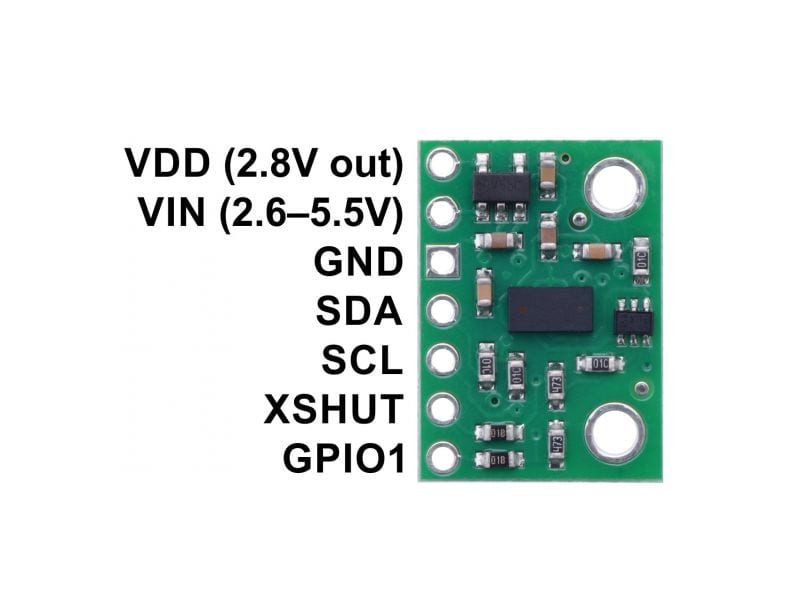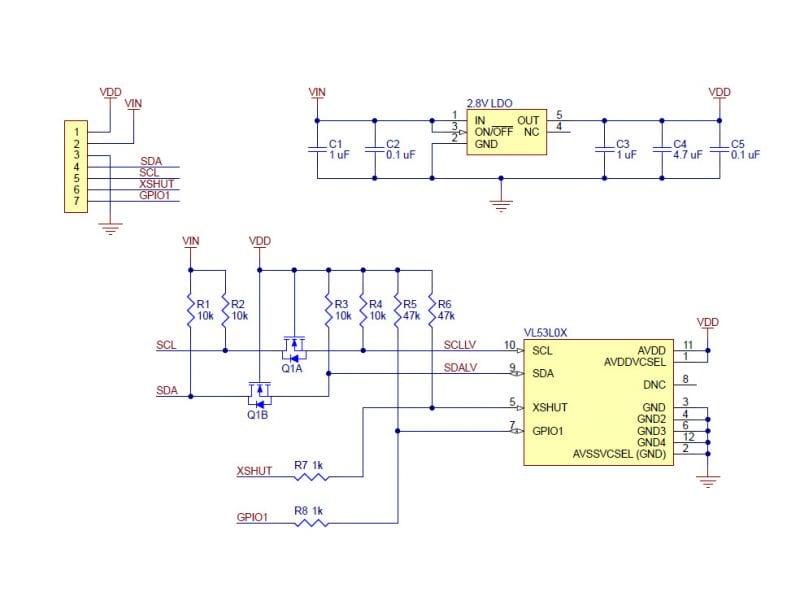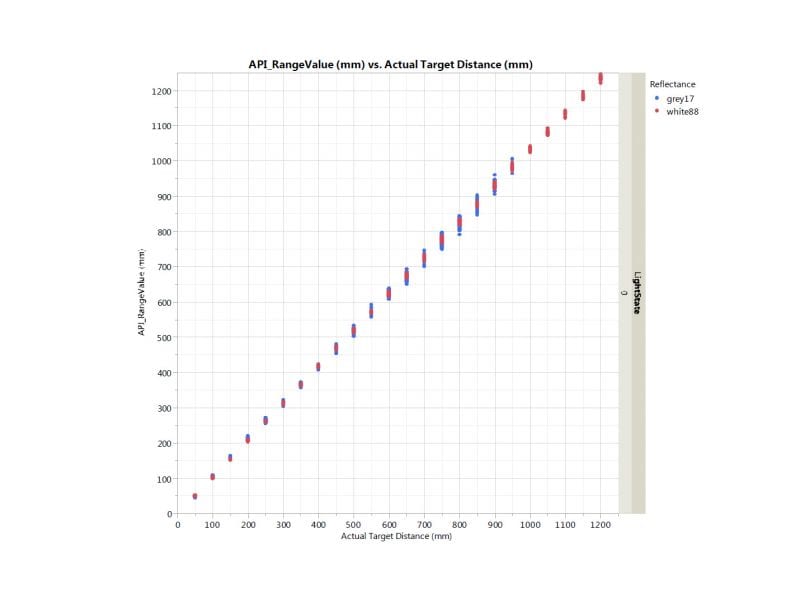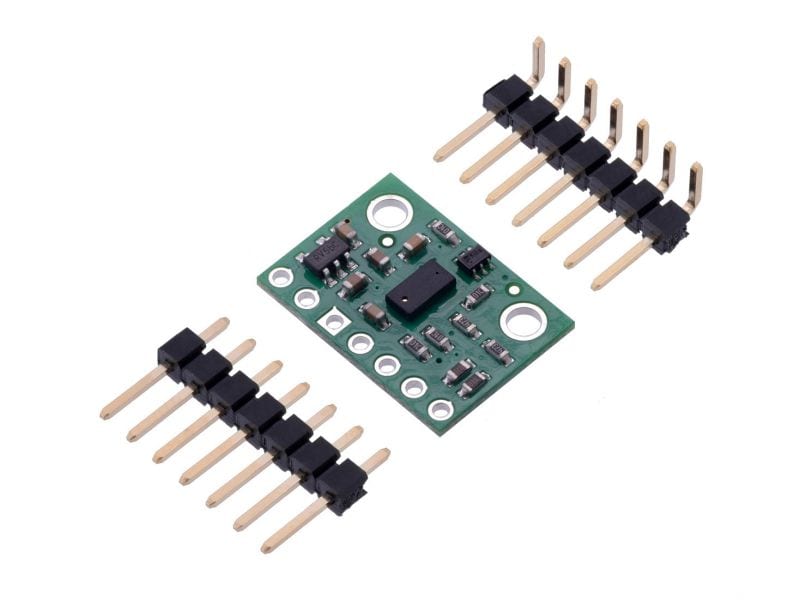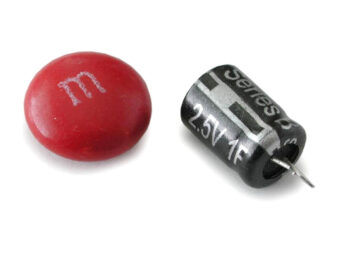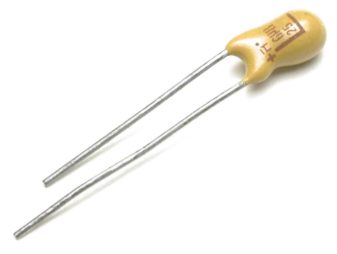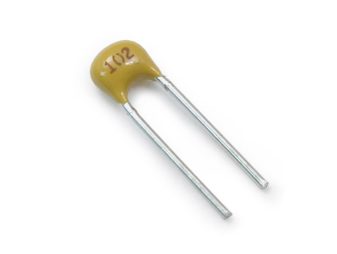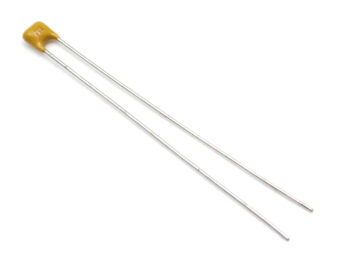VL53L0X Time-of-Flight Distance Sensor Carrier with Voltage Regulator, 200cm Max
USD $13.95
True real-time distance measuring up to 2M away!
DESCRIPTION
This sensor is a carrier/breakout board for ST’s VL53L0X laser-ranging sensor, which measures the range to a target object up to 2 m away. The VL53L0X uses time-of-flight measurements of infrared pulses for ranging, allowing it to give accurate results independent of the target’s color and surface. Distance measurements can be read through a digital I²C interface. The board has a 2.8 V linear regulator and integrated level-shifters that allow it to work over an input voltage range of 2.6 V to 5.5 V, and the 0.1″ pin spacing makes it easy to use with standard solderless breadboards and 0.1″ perfboards.
The VL53L0X from ST Microelectronics is a time-of-flight ranging system integrated into a compact module. This board is a carrier for the VL53L0X, so we recommend careful reading of the VL53L0X datasheet (1MB pdf) before using this product.
The VL53L0 uses ST’s FlightSense technology to precisely measure how long it takes for emitted pulses of infrared laser light to reach the nearest object and be reflected back to a detector, so it can be considered a tiny, self-contained lidar system. This time-of-flight (TOF) measurement enables it to accurately determine the absolute distance to a target without the object’s reflectance greatly influencing the measurement. The sensor can report distances of up to 2 m (6.6 ft) with 1 mm resolution, but its effective range and accuracy (noise) depend heavily on ambient conditions and target characteristics like reflectance and size, as well as the sensor configuration. (The sensor’s accuracy is specified to range from ±3% at best to over ±10% in less optimal conditions.)
Ranging measurements are available through the sensor’s I²C (TWI) interface, which is also used to configure sensor settings, and the sensor provides two additional pins: a shutdown input and an interrupt output.
The VL53L0X is a great IC, but its small, leadless, LGA package makes it difficult for the typical student or hobbyist to use. It also operates at a recommended voltage of 2.8 V, which can make interfacing difficult for microcontrollers operating at 3.3 V or 5 V. Our breakout board addresses these issues, making it easier to get started using the sensor, while keeping the overall size as small as possible.
The carrier board includes a low-dropout linear voltage regulator that provides the 2.8 V required by the VL53L0X, which allows the sensor to be powered from a 2.6 V to 5.5 V supply. The regulator output is available on the VDD pin and can supply almost 150 mA to external devices. The breakout board also includes a circuit that shifts the I²C clock and data lines to the same logic voltage level as the supplied VIN, making it simple to interface the board with 3.3 V or 5 V systems, and the board’s 0.1″ pin spacing makes it easy to use with standard solderless breadboards and 0.1″ perfboards. The board ships fully populated with its SMD components, including the VL53L0X, as shown in the product picture.
For a similar but shorter-range sensor (up to 20 cm, or 60 cm with reduced resolution) that includes ambient light sensing functionality, see our VL6180X carrier.
Specifications
- Dimensions: 0.5″ × 0.7″ × 0.085″ (13 mm × 18 mm × 2 mm)
- Weight without header pins: 0.5 g (0.02 oz)
- Operating voltage: 2.6 V to 5.5 V
- Supply current: 10 mA (typical average during active ranging).
Varies with configuration, target, and environment. Peak current can reach 40 mA. - Output format (I²C): 16-bit distance reading (in millimeters)
- Distance measuring range: up to 2 m (6.6 ft); see the graph at the right for typical ranging performance.
Effective range depends on configuration, target, and environment.
The datasheet does not specify a minimum range, but in our experience, the effective limit is about 3 cm.
The board has two mounting holes spaced 0.5″ apart that work with #2 and M2 screws (not included).
Important note: This product might ship with a protective liner covering the sensor IC. The liner must be removed for proper sensing performance.
Connections
A minimum of four connections is necessary to use the VL53L0X board: VIN, GND, SCL, and SDA. The VIN pin should be connected to a 2.6 V to 5.5 V source, and GND should be connected to 0 volts. An on-board linear voltage regulator converts VIN to a 2.8 V supply for the VL53L0X IC.
The I²C pins, SCL and SDA, are connected to built-in level-shifters that make them safe to use at voltages over 2.8 V; they should be connected to an I²C bus operating at the same logic level as VIN.
The XSHUT pin is an input and the GPIO1 pin is an open-drain output; both pins are pulled up to 2.8 V by the board. They are not connected to level-shifters on the board and are not 5V-tolerant, but they are usable as-is with many 3.3 V and 5 V microcontrollers: the microcontroller can read the GPIO1 output as long as its logic high threshold is below 2.8 V, and the microcontroller can alternate its own output between low and high-impedance states to drive the XSHUT pin. Alternatively, our 4-channel bidirectional logic level shifter can be used externally with those pins.
Pinout:
- PIN Description
- VDD Regulated 2.8 V output. Almost 150 mA is available to power external components. (If you want to bypass the internal regulator, you can instead use this pin as a 2.8 V input with VIN disconnected.)
- VIN This is the main 2.6 V to 5.5 V power supply connection. The SCL and SDA level shifters pull the I²C lines high to this level.
- GND The ground (0 V) connection for your power supply. Your I²C control source must also share a common ground with this board.
- SDA Level-shifted I²C data line: HIGH is VIN, LOW is 0 V
- SCL Level-shifted I²C clock line: HIGH is VIN, LOW is 0 V
- XSHUT This pin is an active-low shutdown input; the board pulls it up to VDD to enable the sensor by default. Driving this pin low puts the sensor into hardware standby. This input is not level-shifted.
- GPIO1 Programmable interrupt output (VDD logic level). This output is not level-shifted.
Schematic
The schematic shows the additional components the carrier board incorporates to make the VL53L0 easier to use, including the voltage regulator that allows the board to be powered from a 2.6 V to 5.5 V supply and the level-shifter circuit that allows for I²C communication at the same logic voltage level as VIN. This schematic is also available as a downloadable PDF (100k pdf).
I²C communication
The VL53L0X can be configured and its distance readings can be queried through the I²C bus. Level shifters on the I²C clock (SCL) and data (SDA) lines enable I²C communication with microcontrollers operating at the same voltage as VIN (2.6 V to 5.5 V). A detailed explanation of the I²C interface on the VL53L0X can be found in its datasheet (1MB pdf), and more detailed information about I²C in general can be found in NXP’s I²C-bus specification (371k pdf).
The sensor’s 7-bit slave address defaults to 0101001b on power-up. It can be changed to any other value by writing one of the device configuration registers, but the new address only applies until the sensor is reset or powered off. ST provides an application note (196k pdf) that describes how to use multiple VL53L0X sensors on the same I²C bus by individually bringing each sensor out of reset and assigning it a unique address.
The I²C interface on the VL53L0X is compliant with the I²C fast mode (400 kHz) standard. In our tests of the board, we were able to communicate with the chip at clock frequencies up to 400 kHz; higher frequencies might work but were not tested.
Sensor configuration and control
In contrast with the information available for many other devices, ST has not publicly released a register map and descriptions or other documentation about configuring and controlling the VL53L0X. Instead, communication with the sensor is intended to be done through ST’s VL53L0X API (STSW-IMG005), a set of C functions that take care of the low-level interfacing. To use the VL53L0X, you can customize the API to run on a host platform of your choice using the information in the API documentation. Alternatively, it is possible to use the API source code as a guide for your own implementation.
Sample code
Here is basic Arduino library for the VL53L0X, which can be used as an alternative to ST’s official API for interfacing this sensor with an Arduino or Arduino-compatible controller. The library makes it simple to configure the VL53L0X and read the distance data through I²C. It also includes example sketches that show you how to use the library.
Recommended links:
- VL53L0X library for Arduino
- An Arduino library for interfacing with the VL53L0X time-of-flight distance sensor.
- VL53L0X documentation
- ST’s product page for the VL53L0X, with links to application notes and other resources.
- VL53L0X API (STSW-IMG005)
- ST’s API (application programming interface) for the VL53L0X.
- VL53L0X API port for Raspberry Pi
- A port of ST’s VL53L0X API for the Raspberry Pi by Mathieu Cassard.
RESOURCES & DOWNLOADS
Additional information
| Weight | 0.0027 kg |
|---|---|
| Dimensions | 7 × 4 × 0.5 cm |
REVIEWS
Solarbotics, Ltd. is not responsible for misprints or errors on product prices or information. For more information, please see our Terms and Conditions.
Warning: This product contains chemicals known to the State of California to cause cancer and birth defects or other reproductive harm.
Please visit www.P65Warnings.ca.gov for more information. This item was manufactured prior to August 31, 2018.


